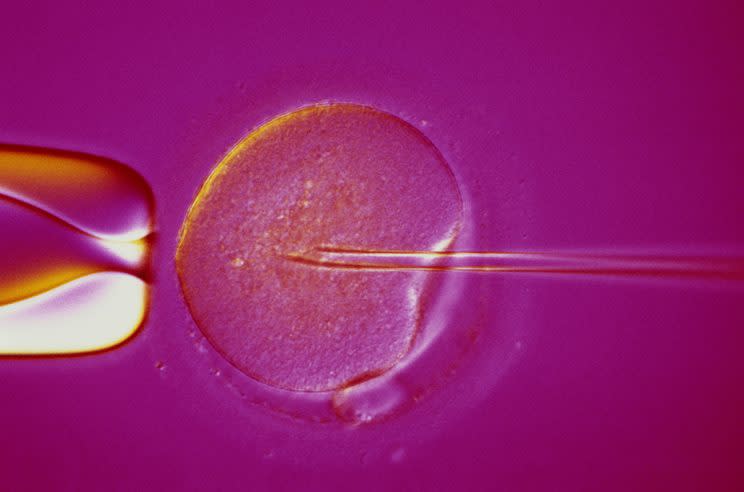Dutch IVF Clinic Might Have Fertilized 26 Women With Wrong Sperm

A “procedural error” at a Dutch infertility clinic has resulted in 26 women having possibly received the wrong sperm. The transferred embryos during in vitro fertilization (IVF) were created with the woman’s own eggs, but might not have been fertilized with the desired sperm.
The possible mix-up happened at the Utrecht University Medical Centre during a process known as ICSI, or intra-cytoplasmic sperm injection, wherein an individual sperm is injected directly into an egg cell to create a fertilized egg for transfer. (In standard IVF, the egg cell is placed in a petri dish with sperm, and the sperm independently fertilize the egg cell.)
While the pipette used to inject the individual sperm into eggs was changed out between each individual procedure, the lab technician performing the procedure forgot to change out the rubber top on the pipette between procedures. The pipette in question also utilized a rubber top that did not, per protocol, have a filter in it. The incorrect pipette top and protocol was used between April 2015 through November 2016, and involved 26 couples, nine of whom who have had children and four of whom are presently pregnant. The remaining 13 couples have frozen embryos at the center.
In a statement, the Utrecht University Medical Centre “The UMC’s board regrets that the couples involved had to receive this news. During fertilization, sperm cells from one treatment couple may have ended up with the egg cells of 26 other couples. Therefore there’s a chance that the egg cells have been fertilized by sperm other than that of the intended father.”
And while the news out of the Netherlands is certainly distressing for the families involved — and all individuals currently considering or embarking on infertility treatments using assisted reproductive technologies (ART) — it remains an incredibly rare possibility in a field in which the greatest precautions are regularly taken to protect against such possibilities.
“Due to the diligence of lab staff and overlapping systems to assure patient identity, it is extraordinarily rare for mistakes to occur in IVF labs involving use of the wrong sperm, eggs, or embryos,” Jim Toner, MD, PhD, a board-certified specialist in Reproductive Endocrinology and a fertility specialist at the Atlanta Center for Reproductive Medicine in Atlanta, Georgia, tells Yahoo Beauty. Toner is also the Clinical Director of the Society for Assisted Reproductive Technologies (SART).
Toner explains, “While mistakes have occurred — as can happen in any process involving humans — the low error rate is strong evidence of the care taken to avoid such outcomes.”
Recent research that analyzed the rate of error in fertility treatment found that in a ten and a half-year period, moderate errors — defined as a problem negatively affecting a fertility treatment cycle, but not in a way in which the cycle was lost — and significant errors — defined as a loss of a cycle because of mishandling of gametes or embryos — happen in just 0.05 percent and 0.18 percent, respectively, of all fertility treatment cycles. In comparison, other areas of medicine see a risk of adverse events due to laboratory errors in 2.7 – 12 percent of all cases.
Let’s keep in touch! Follow Yahoo Beauty on Facebook, Twitter, Instagram, and Pinterest.

